
by Pursuit | Jun 8, 2023 | Gear
Benchmade has always been known for producing top-notch knives, and the Hidden Canyon Hunter lives up to that reputation.
The build quality of this knife is exceptional. It features a full-tang construction, meaning that the blade extends all the way through the handle, providing added strength and durability. The blade itself is made from high-quality stainless steel, which not only offers excellent corrosion resistance but also retains its sharpness for a long time. The blade shape is a drop point, which is versatile and well-suited for various tasks.
The ergonomics of the Hidden Canyon Hunter are fantastic. The handle is made from durable G10 material, which provides a secure and comfortable grip even in wet conditions. The knife has a generous finger position and jimping on the spine, allowing for precise control during intricate tasks. The overall size of the knife is compact, making it easy to carry and maneuver, especially when field dressing or skinning game.
The Hidden Canyon Hunter has never been left home during pursuits. The blade arrived razor-sharp out of the box and maintained its sharpness throughout extended use. The drop point design allows for excellent control and precision when performing tasks like field dressing, skinning, and even light camp chores. The blade’s size strikes a good balance between versatility and maneuverability, making it suitable for a wide range of outdoor activities.
the Hidden Canyon Hunter comes with a sturdy and well-designed leather sheath that provides secure retention and easy access to the knife. The sheath can be attached to your belt, gear or for those of us who like quick access during ice fishing it can be slung around your neck, ensuring that the knife is readily available when you need it
Overall, the Benchmade Hidden Canyon Hunter Knife is a top-quality hunting and outdoor knife that offers exceptional performance, durability, and functionality. It combines excellent craftsmanship, reliable materials, and a user-friendly design, making it a reliable companion for any outdoor enthusiast or hunter. While it may have a higher price point compared to some other options on the market, the Hidden Canyon Hunter is worth every penny for those who demand a high-performance knife that will last for years to come.
Buy Now
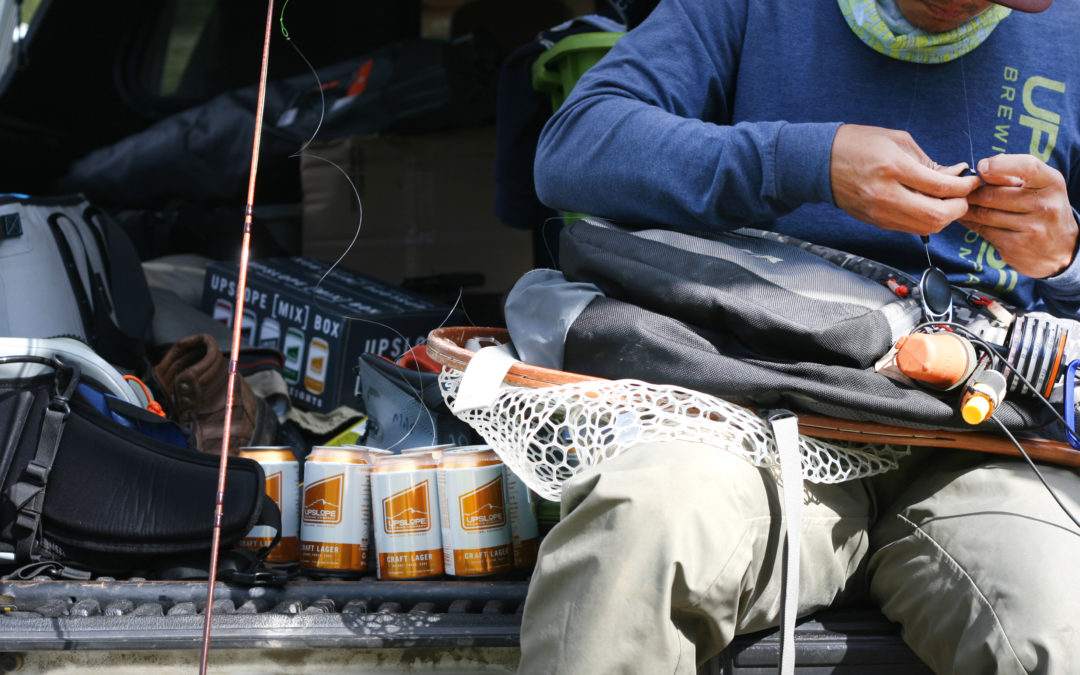
by Pursuit | May 22, 2023 | Conservation, Fishing
Why a brewer of fine beers is fighting to keep our water sparkling, our trout frisky, and our brews crisp.
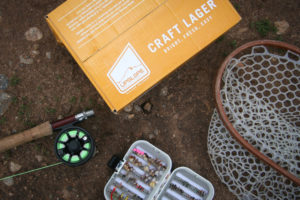
Way back when, about 11 years ago, long before quality craft beer in a can was much of a thing, Upslope co-founder Henry Wood was catching up with his old NOLS instructor colleague and pal Tom Reed—Trout Unlimited’s Angler Conservation Program Director—over a beer. Reed wanted to take the conservation group’s 1% For Rivers program national. And Wood was gearing up to do the same with their new Colorado born Craft Lager. If you’re envisioning some affirmative head-nodding you have the right idea. The gist of it? Buy a Craft Lager and one percent of the gross sales goes to the Trout Unlimited chapter in the state where you bought it. That’s “gross” not “net,” which translates to no small sum. Since just 2015, Upslope has donated $60,000 to the cause. “Beer and trout have a lot in common,” says Reed. “They both depend on clean water.”
Fishing and Craft Lager, A Great Pairing
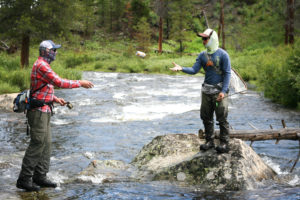
What you drink matters. That’s true regardless of your passions, but if you’re into fly fishing, it’s especially relevant. Why wouldn’t you buy a beer that helps restore and protect rivers? Also, Craft Lager comes in cans, which are the perfect vessels for your vessel. Cans are lighter to ship, reducing the carbon footprint, and they’re easier to recycle than glass. There’s almost no waste: If Americans recycled every can, 96 percent of that aluminum would get repurposed. As for pairing, it doesn’t hurt that this crisp, straw-colored lager is sessionable. “It’s an easy drinking, 4.8 percent alcohol, American made all grain lager,” says Wood. “It’s tough to crush higher alcohol IPAs and steer a driftboat.”
The Upslope Crew Walks the Talk
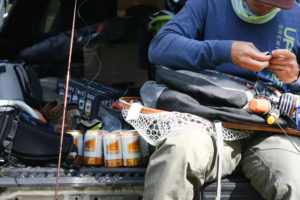
Just as it’s hard to find a mountain biker or hiker that doesn’t see the value of spending an afternoon standing in a cold stream with a rod in hand, it’s hard to find an Upslope employee that isn’t willing to wade into river conservation work. “Beyond our donations to Trout Unlimited, we’ve physically done stream restoration as a company for years,” says Wood. “We coordinate with Rocky Mountain Anglers here in Boulder on Boulder Creek, and on South Boulder Creek in Eldorado Canyon State Park pulling out weeds and rebuilding banks. Our employees get two paid days off a year to donate their time to nonprofit work.”
The Smith River Thanks You
Like the Grand Canyon is to whitewater boaters, the Smith River in Central Montana is to fly fishers—one of the crown jewels. As such, it’s the only float in the nation that requires a permit—which you draw for much like choice elk habitat. To call that float “coveted” would be an understatement. But now a proposed hard rock copper mine on Sheep Creek near the put-in for the Smith is jeopardizing that storied waterway. With money that comes in part from Craft Lager sales, Trout Unlimited is paying lawyers to fight the Australian company pushing the mine and hiring an educator to travel the state singing the virtues of the Smith. “There’s a checkered history of hard rock mining in the state of Montana,” says Reed. “But even though Montana’s mining laws are friendly to international corporations we’ve given them a good fight. We don’t think that’s an appropriate place for a mine. And we aren’t alone. We have good grounds for a lawsuit. I’m hopeful that with continued support t we’ll win.”
Upslope’s Commitment Has Only Grown
Upslope is now one of only two certified B Corp breweries in Colorado, and one of only about 30 worldwide. What’s that mean for the average fly fisher in search of malted beverages? A lot actually. B Corp status depends on a commitment to three overarching promises to take care of employees, the community that the business touches, and the environment. Because Upslope has been committed to such goals since day one, it earned B Corp certification on the first bid. Now the challenge is to constantly improve to meet B Corp’s evermore exacting standards. Much of that challenge falls on Upslope Sustainability Coordinator Elizabeth Waters—who started out at the brewery in the tasting room as a bartender with an environmental degree. “Our biggest blind spot was our supply chain,” says Waters. “Unlike employee benefits and environmental initiatives, we didn’t have any set policy around how we source materials. Now we’re chipping away at it vigorously. It’s the little things that add up. And those little actionable initiatives get identified by our employees. Like when a hops supplier recently switched from non-recyclable paper bags lined with plastic to full paper. That simple move keeps tons of waste from the landfill. We hope to be 85 percent to our zero waste soon.”
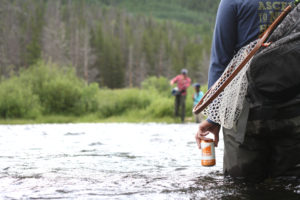
Check Out Upslope Brewing
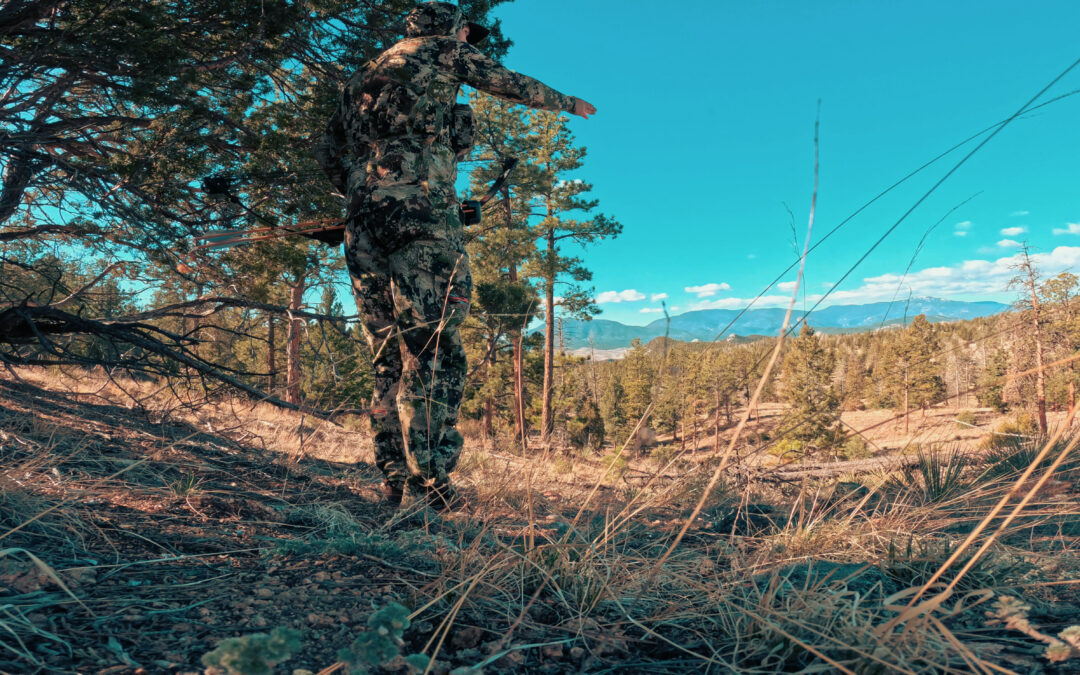
by Pursuit | May 16, 2023 | Hunting
Turkey patterns constantly change during the Spring season, knowing what those are and what they might mean for your hunt can be critical in filling that tag. During the final week of May, turkeys may exhibit specific behaviors due to various factors, including breeding activity, weather conditions, and hunting pressure. Here are some key behaviors to consider during this time:
1. Breeding activity: By late May, the turkey breeding season is typically winding down, but there may still be some late-nesting hens and active gobblers. Toms might continue to gobble, but their response to calls may be less enthusiastic compared to earlier in the season. However, if you come across receptive hens, gobblers may still be in pursuit.
2. Roosting patterns: Turkeys generally maintain consistent roosting patterns, and during the final week of May, they may still be using the same roost sites as earlier in the season. Pay attention to where turkeys roost, as it will help you plan your morning setups.
3. Feeding routines: Turkeys will continue to feed throughout the day, with a focus on replenishing their energy reserves after the breeding season. Identify preferred feeding areas such as open fields, agricultural fields, or mast-producing trees. Turkeys will often travel to these locations during the late morning or early afternoon.
4. Increased wariness: As the season progresses and turkeys have experienced hunting pressure, they tend to become more cautious and wary of calls and decoys. They may be less responsive to aggressive calling and exhibit more skepticism towards decoys. Using subtle and realistic calling techniques can be more effective.
5. Adjusting to weather conditions: Weather can play a significant role in turkey behavior during late May. If the weather is warm, turkeys may adjust their activity patterns and feed more during cooler hours. Rainy or windy conditions may limit their movement and make them more likely to seek sheltered areas.
6. Changing habitat preferences: By late May, turkeys may alter their habitat preferences. They might move from dense cover used during the breeding season to more open areas, such as fields or edges of woodlands. Consider scouting to identify these transitional areas.
7. Hunting pressure impact: Turkeys that have experienced hunting pressure throughout the season can become more difficult to hunt. They might move to less-accessible areas, become more nocturnal, or change their patterns altogether. Adjust your hunting strategies accordingly, such as hunting quieter or less-pressured locations.
Observing turkey behavior in your specific hunting area during the final week of May is crucial. Spend time scouting, noting any changes in turkey activity, and adjust your hunting techniques accordingly. Adapting to their behavior patterns can increase your chances of a successful hunt during the closing days of the season.
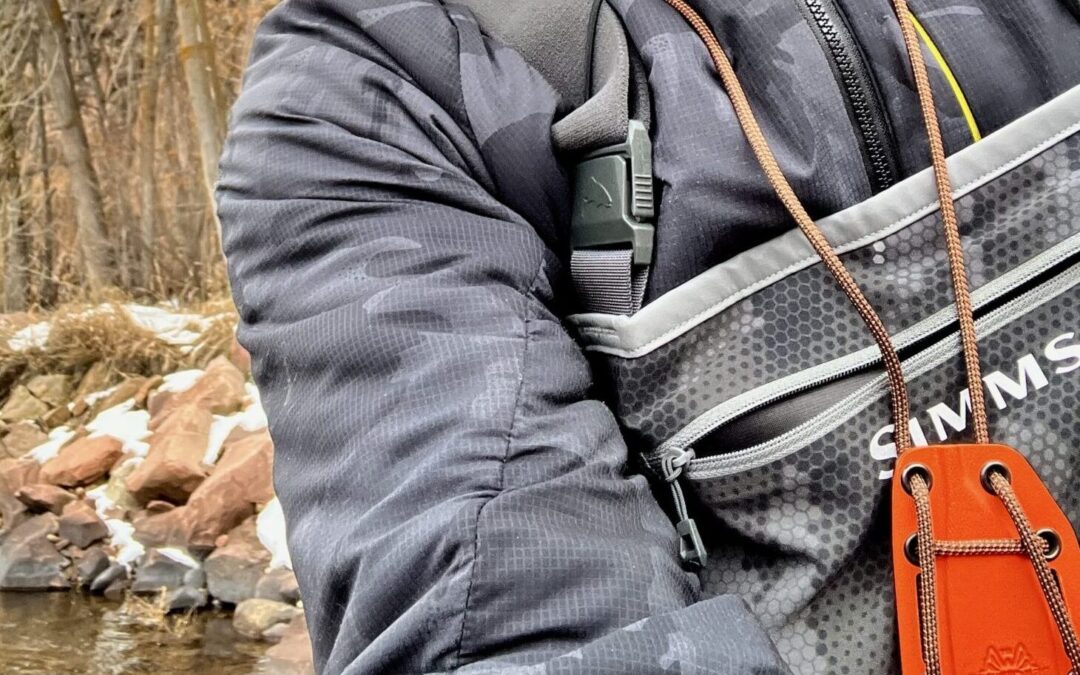
by Pursuit | May 9, 2023 | Fishing, Gear
The Simms Guide Classic Wader is a best-in-class fishing wader designed for serious anglers who demand the best in performance, durability, and comfort. Made from high-quality materials, these waders are built to withstand the toughest conditions and provide reliable protection and support while you fish.
One of the standout features of the Simms Guide Classic Wader is the use of 4-layer GORE-TEX Pro Shell fabric, which provides exceptional breathability, waterproofing, and durability. The waders are also reinforced with extra layers of fabric in high-wear areas such as the knees, shins, and seat, ensuring that they will last for many seasons of use.
In terms of comfort, the Simms Guide Classic Wader features a variety of thoughtful design elements. The adjustable suspenders allow for a custom fit, while the neoprene booties provide a snug and comfortable fit for your feet. The waders also have a flip-out pocket for storing small items like tippet, and the hand warmer pockets are lined with fleece for added warmth.
Overall, the Simms Guide Classic Wader is an excellent choice for anglers who demand the best in terms of performance and comfort. While they are a bit more expensive than some other waders on the market, the quality of the materials and construction make them well worth the investment. Whether you’re a seasoned angler or just starting out, the Simms Guide Classic Wader is sure to provide years of reliable use and excellent performance on the water.
BUY NOW

by Pursuit | May 9, 2023 | Fishing, Gear
We’ve been fishing the Sage Pulse 5-weight for nearly 3 years now and thought we should finally tell you that you should add it to your fly fishing quiver ASAP! The Sage Pulse 5-weight rod is a high-quality fly rod designed for versatile use in freshwater environments. It’s a medium-fast action rod that offers excellent performance for anglers of all skill levels, from beginner to expert.
One feature to love in the Sage Pulse 5-weight rod is its construction. The rod is made using Sage’s KonneticHD technology, which involves a unique blend of high-modulus graphite materials that increase strength, reduce weight, and improve accuracy. This technology allows the rod to be both responsive and sensitive, making it easier to cast and detect strikes.
The Sage Pulse 5-weight rod also features a beautiful, stealthy black spruce blank that gives it a sleek, modern appearance. The rod is equipped with high-quality components, including Fuji ceramic stripper guides and hard-chromed snake guides that ensure smooth line flow and minimize friction.
When it comes to performance, the Sage Pulse 5-weight rod does not disappoint. Its medium-fast action allows for excellent line control and accuracy, making it ideal for both short and long casts. The rod has a smooth and consistent flex, which makes it easy to cast with accuracy and distance. The rod also has excellent sensitivity, making it easy to detect subtle strikes and pick up on changes in the water.
Overall, the Sage Pulse 5-weight rod is an exceptional fly rod that offers excellent performance, quality construction, and versatility. It’s a great choice for anglers who want a high-quality rod that can handle a variety of fishing situations. While it is on the higher end of the price range for 5-weight rods, the Sage Pulse is a worthwhile investment for any angler who wants a reliable and high-performing fly rod.
BUY NOW









